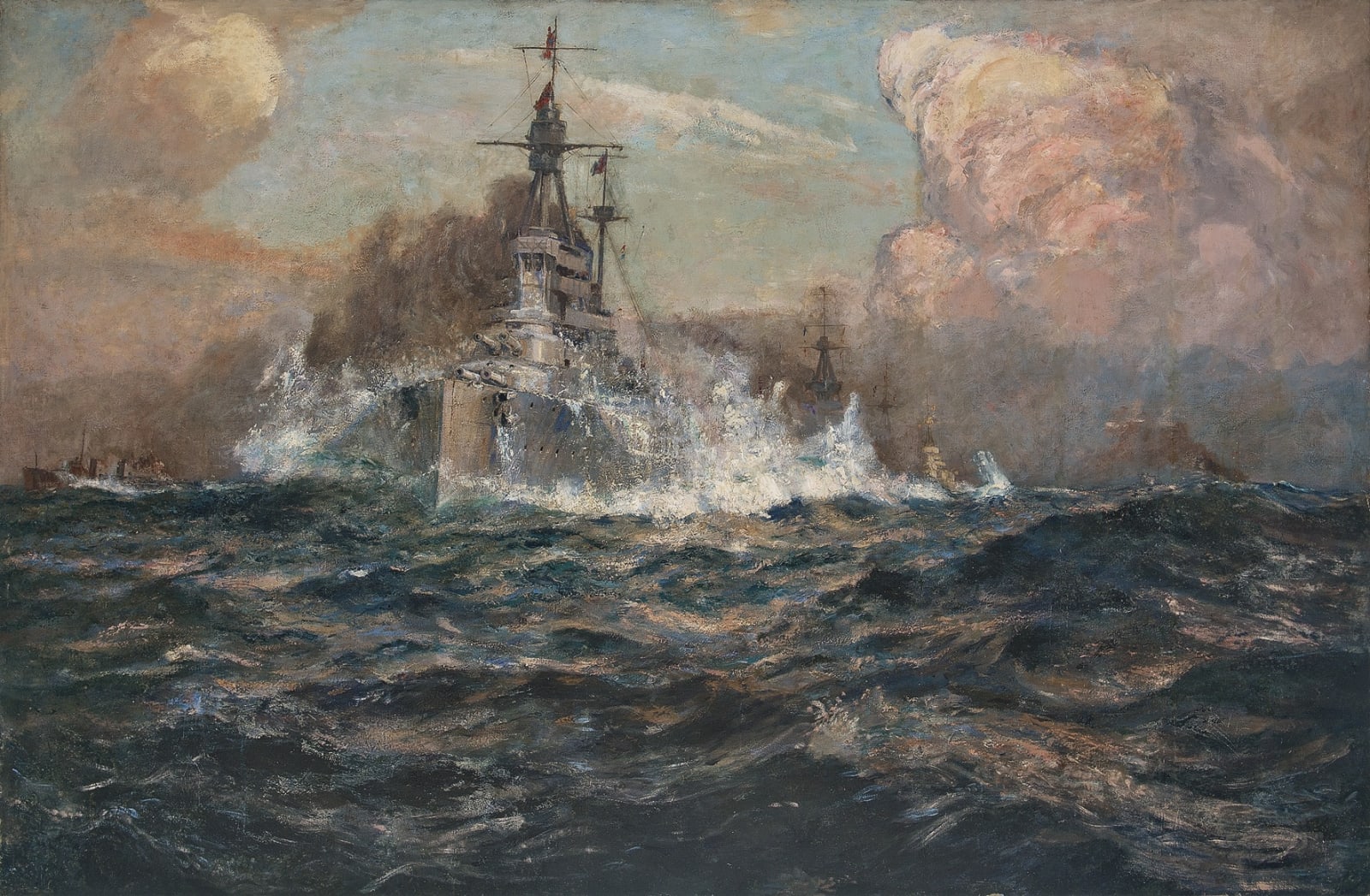Arthur James Wetherall Burgess, RI, ROI, RBC, RSMA Australian, 1879-1957
Exhibitions
Royal Academy, May 3rd .1916.
Literature
p.168, The Wonder Book of the Navy; Lock & Co. 1917
The painting depicts the new Queen Elizabeth Class Battleships in line astern. They were the latest development in naval technology at the time. These ships featured 8 15 inch guns capable of firing a one ton shell over 25000 yards. They were also the first battleships to be completely oil-fired.
Five ships were built: Queen Elizabeth, Warspite, Valiant, Barham and Malaya. Commissioned between December 1914 and February 1916, having been laid down two year earlier in shipyards at Portsmouth, Devonport, Clydebank and Tyneside, they were the first 'fast' battleships with a projected speed of 25 knots.
At the Battle of Jutland, four of the ships formed Admiral Hugh Evan-Thomas's 5th Battle Squadron, and in the clash with the German 1st Scouting Group under Admiral Franz von Hipper they 'fired with extraordinary rapidity and accuracy' (according to Admiral Scheer, Commander of the High Seas Fleet), damaging SMS Lutzow and SMS Seydlitz and a number of other German warships. These battleships were able to engage German battlecruisers at a range of £19,000 yards (17,400m), which was beyond the maximum range of the Germans' guns. Three of the Queen Elizabeths received hits from German warships during the engagement, yet they all returned home. Warspite was the most heavily damaged, with her rudder jammed and taking fifteen hits, coming close to foundering.
